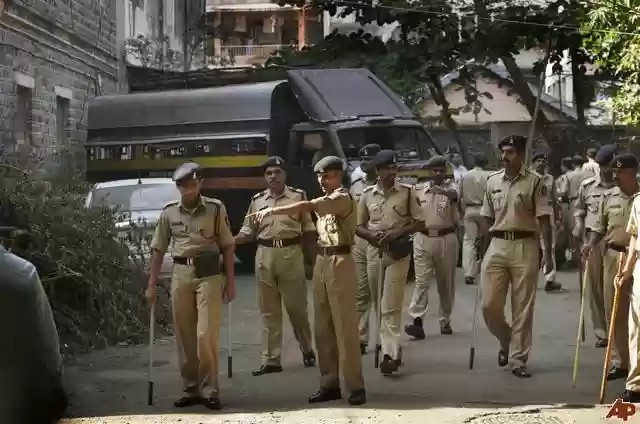
The city of Mumbai was threatened on the 26th of November 2008 – a gruesome attack was carried out by a band of notorious terrorists. At the hour of crisis was a moment of reckoning for the Mumbai police force. As the first line of defence, the task of resisting the attack lay upon their shoulders. The fightback although valiant – turned out to be futile as the subsequent sieges could not be thwarted. Apart from being a professional short-coming, the Mumbai police was also met with moments of personal grief. Among the casualties of the attacks were 5 of Mumbai’s finest Assistant Police Sub-Inspector Tukaram Omble , Joint Commissioner of Police Hemant Karkare, Additional Commissioner of Police Ashok Kamte, Encounter specialist Senior Inspector Vijay Salaskar and Senior Inspector Shashank Shinde.
Although stability was restored after a hellish 3 day period, the attacks raised pertinent questions on the condition and capability the police in India. The Mumbai police were clearly underprepared and underequipped to deal with an attack of such magnitudes and their vulnerabilities were shown when it mattered the most. This brings to light the need for major reforms in the police structure and how it functions. In fact, various reforms in the system of policing were suggested in the previous year (2014). The Supreme Court issued a list of 7 Directives to various state governments to aid in the reformation of the police system. The reforms were largely administrative in nature and were focussed on making the police more efficient. The Directives also focussed on addressing issues of police brutality and misuse of force. However, this attempt was largely unsuccessful as a number of states did not comply with these directives. For checking of ground realities of implementation of the directives, the Committee took up the task with respect to four States located in four different geographical zones – U.P., Maharashtra, Karnataka and West Bengal.
It can be seen from the report that the level of compliance of the Supreme Court directives in these States ranges from total non-compliance to partial or marginal compliance to mere paper implementation. The committee recommended that The Supreme Court – to begin with, may therefore initiate action as deemed appropriate against these States. The Justice J.S. Verma committee constituted in 2013 also recommended the implementation of the directives issued in Prakash Singh’s Case. Unfortunately, both the K.T. Thomas Committee and the J.S. Verma Committee suggested structural changes in the police system. One can only fathom if a more holistic approach is required.
In fact, a large sector of the police force is overworked and understaffed. With a rise in the level of crime in society, the workload of the average policemen has only increased. The heavy dose of blood and gore only contributes to the process of desensitization of the officers. “In psychology, desensitization is defined as the diminished emotional responsiveness to a negative or aversive stimulus after repeated exposure to it.” Hence, what is generally considered as disturbing or inhuman becomes an everyday occurrence for these men. Hence, this often leads to regular utilization of Third-Degree methods of torture which is a norm in various police stations.
Studies show that even Junior Policemen in Greece undergo a process of desensitization to torture while being posted at a torture center. The issue lies not just with symptoms but also with prevention of psychological stress. It is imperative for State Governments to establish measures to periodically asses the mental health of its police officers. Facilities for counselling and psychological therapy must be introduced as a preliminary measure. Measures for rehabilitation of officers in case of traumatic experiences must also be set up. Psychological issues among the police force are not necessarily specific as it can also be a result of the general nature of work. A large number of police stations in India are under-staffed and this produces the case of a few having to do too much. The levels of mental stress skyrockets spilling over onto the behaviours depicted in police stations. The effect can also be seen in the apathy shown towards the complainants. Dealing with these concerns would not only address a specific issue but would also be instrumental in creating a Domino-effect leading to a complete overhaul reminiscent of ripples in a pond. Hence, the system of policing in India would only become a fully functioning unit if a multi-dimensional approach is undertaken and to effect a change, one must begin at the roots.
